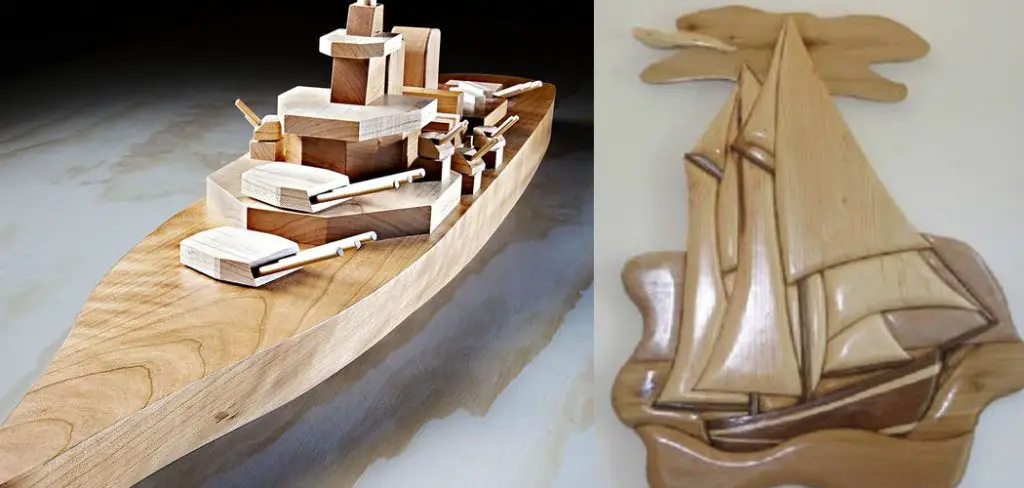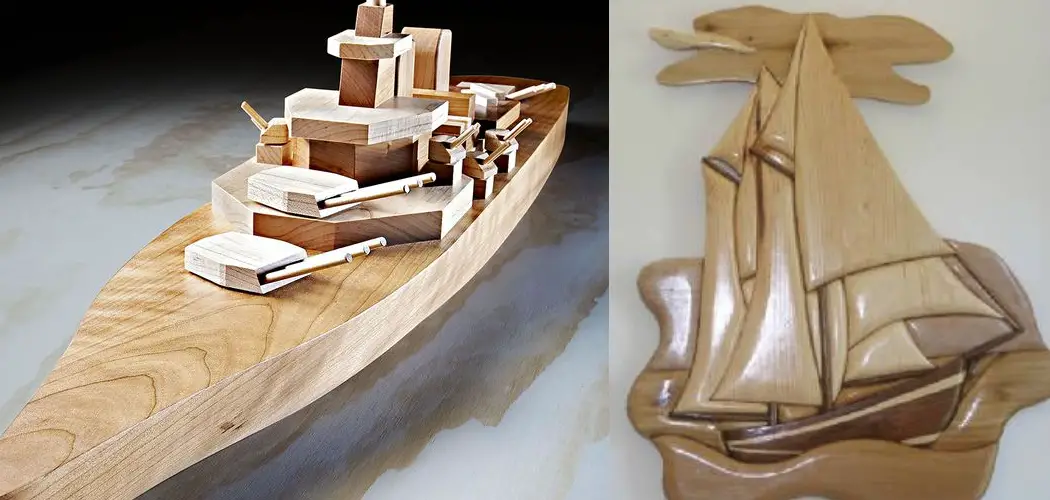There is nothing like the satisfaction of completing a woodworking project. The only thing that can rival it is the feeling of accomplishment you get from shipping that finished project to its new home.

With a few simple steps, you can make sure your woodworking project arrives in great condition and is ready to be enjoyed by its new owner. So keep reading to learn more about how to ship woodworking projects.
Summary: There are many ways to ship woodworking projects, but the most important thing is to make sure the project is properly protected. Some tips for shipping woodworking projects include using a heavy-duty box or packing it in multiple boxes, using bubble wrap and/or padding, and making sure the woodworking project is wrapped in a layer of plastic.
What Are Woodworking Projects?

Woodworking projects are a great way to tap into your creativity and make something beautiful or useful. Whether you’re a beginner or an experienced woodworker, there’s a project out there that’s perfect for you. Some popular woodworking projects include building furniture, creating toys, making jewelry boxes, and crafting cutting boards.
With a little imagination, the possibilities are endless. One of the great things about woodworking is that it can be done alone or with friends and family. It’s a great way to bond with loved ones while working on something creative together. So what are you waiting for? Pick out a project and get started today!
Why Might You Need to Ship Woodworking Projects?
You may be wondering why you would need to ship woodworking projects. After all, isn’t it easier to deliver them in person? There are a few reasons why shipping might be the best option. First, it can be more cost-effective than delivering in person, particularly if you need to ship multiple projects to different locations.
Second, it can be faster and more convenient than driving from place to place. And finally, shipping allows you to track your project and ensure it arrives safely. Whether you’re shipping a one-of-a-kind piece or a batch of identical items, choosing the right shipping option is essential for ensuring that your projects arrive on time and in perfect condition.
10 Tips to Follow on How to Ship Woodworking Projects
When you’re ready to ship your woodworking projects, there are a few things you should keep in mind to ensure safe and successful delivery. Here are some tips on how to ship woodworking projects:
1. Plan Your Project
Make sure you have a clear plan for your project before you start shipping it. This will help you determine the best way to protect your project during shipping.
2. Assemble Your Materials
Gather all the materials you’ll need for your project in one place. This will make shipping your project easier and help prevent damage during shipping.
3. Cut the Wood to Size
Make sure you cut the wood to the correct size before shipping it. This will help prevent damage during shipping and make it easier to assemble your project when it arrives.

4. Drill Holes and Attach Hardware
Drill any necessary holes and attach any hardware before shipping your project. This will help prevent damage during shipping and make it easier to assemble your project when it arrives.
5. Finish the Project
Apply a finish to your projects, such as paint or stain, before shipping them. This will help protect the projects during shipping and make them look their best when they arrive.
6. Choose the Right Shipping Method
There are various shipping methods available, so choose the one that best meets your needs. Make sure to consider your project’s size, weight, and value when choosing a shipping method.
7. Package Your Project Safely
Pack your project securely to prevent damage during shipping. If possible, use the original packaging. If not, choose a sturdy box slightly larger than your project and fill any empty spaces with packing material such as bubble wrap or Styrofoam peanuts. Seal the box with heavy-duty tape and label it clearly with the destination address.
8. Prepare Your Payment Information
If you’re shipping your project to a customer, you’ll need to include your payment information with the shipment. This is typically done by creating a packing slip with your contact and billing information. You can also include a note with your contact information if the customer needs to reach you after receiving the shipment.
9. Ship Your Package
Once everything is packed and ready to go, it’s time to ship your project! The best way to do this is to take it to your local post office and have them weigh and measure the package. They will then be able to tell you how much it will cost to ship. Make sure to include insurance in case the project gets damaged in transit.
10. Receive Feedback from Customer
After your customer receives the project, it is important to get feedback from them. This helps you to ensure that they are happy with the final product and also helps you to improve your business. If there are any issues with the project, be sure to address them promptly and make changes if necessary.
That’s it! You’ve now learned how to ship woodworking projects. By following these tips, you can be sure that your projects will arrive safely and on time. Shipping woodworking projects doesn’t have to be difficult – follow these simple steps, and you’ll be on your way to success!

What to Consider When Shipping a Woodworking Project
When you’re shipping a woodworking project, there are a few things you need to consider to ensure it arrives safely. First, you need to choose the right packaging material. Second, you must ensure the piece is securely fastened inside the box. And third, you need to choose a shipping method to protect your project from damage.
The type of packaging material you use will depend on the size and fragility of your project. For example, if you’re shipping a small, delicate piece, you might want to use bubble wrap or foam padding. However, if you’re shipping a large or cumbersome piece, you might want to use wood or cardboard.
Once you’ve chosen the right packaging material, you must ensure the piece is securely fastened inside the box. This can be done with screws, nails, or glue. If you’re using screws or nails, ensure they’re not too long, as they could damage the piece during shipping.
Finally, you must choose a shipping method to protect your project from damage. For example, if you’re shipping a delicate piece, you might want to choose a shipping method that includes insurance. That way, if your project is damaged during shipping, you’ll be able to get compensated for the repairs.
How to Choose the Right Shipping Company for Your Woodworking Projects
Shipping your woodworking projects can be a big undertaking. You want to make sure that your projects arrive safely and on time. To do this, you need to choose the right shipping company. There are a few things you should keep in mind when making your selection. First, you need to consider the size and weight of your project. You will want to choose a company that can handle these dimensions.
Second, you need to consider the distance your project will be traveling. You will want to choose a company with experience shipping to your destination. Finally, you need to get quotes from several different companies so that you can compare prices and services.
By keeping these factors in mind, you can be sure to choose the right shipping company for your woodworking projects.
Tips for Packing Your Woodworking Projects Safely
Woodworking projects are susceptible to damage during transport. Here are a few tips on how to pack your projects safely to avoid any costly repairs:
- Reinforcement is key. Use sturdy packing materials like foam or bubble wrap to cushion your project and prevent it from shifting during transit.
- For larger projects, disassemble them into smaller pieces that will fit more easily into your vehicle.
- If possible, transport your projects in a climate-controlled environment to avoid temperature extremes that could cause warping or cracking.
By following these simple tips, you can ensure that your woodworking projects arrive safe and sound – ready to be enjoyed for years to come.
What to Do if Your Woodworking Project Arrives Damaged
If you’re a woodworker, you know there’s nothing quite like the feeling of opening up a new box of lumber, ready to start your next project. But what happens when that box arrives damaged? Whether it’s a few cosmetic imperfections or major structural damage, it can be frustrating (and even costly) to deal with.
However, you can take a few steps to minimize the impact of damage on your project.
First, take a close look at the damage and assess its severity. If it’s just a few scratches or dings, you may be able to sand them out or cover them with a stain or paint. However, if the boards are warped or the grain is damaged, it may be best to start over with new lumber.

Next, contact the company you purchased the lumber from and file a claim. In most cases, they will be happy to send you replacement boards at no cost. Finally, take some time to inspect your lumber before starting your project properly. This will help you catch any damage before it becomes a bigger problem.
By following these steps, you can keep your woodworking projects on track – even if your lumber arrives damaged.
How Do I Ship Large Pieces of Wood?
Shipping large pieces of wood can be daunting, but with careful planning and consideration, it can be accomplished with ease. One key factor to remember when shipping large pieces of wood is selecting the appropriate packaging materials. Choosing sturdy boxes or crates and using padded packing materials or foam sheets will offer extra protection during transit.
Additionally, labeling the package with the shipping address, return address, and handling instructions is essential to ensure that the package arrives at its intended destination intact. Choosing a reliable shipping carrier that can handle large and heavy items is important, and consider purchasing insurance to cover any potential damage or loss during transit.
Accurately weighing and measuring your package is also necessary to avoid any additional charges or delays. Finally, obtaining a tracking number allows you to monitor the progress of your shipment during transit. By keeping these key elements in mind, you can confidently ship large pieces of wood.
How to Prevent Damage to Your Woodworking Projects During Shipping
Shipping your woodworking projects can be a hassle, but it doesn’t have to be. With a little planning and care, you can ensure that your projects arrive at their destination in perfect condition. Here are a few tips to help you prevent damage to your woodworking projects during shipping:
1. Pack them properly. Make sure your projects are well-protected by packing them securely in a box or crate. Use packing material such as bubble wrap or foam to cushion them and prevent movement.
2. Address any potential problems before shipping. If you’re concerned about a particularly delicate or intricate piece, take the time to reinforce it before shipping. This will help to prevent any damage that might occur during transit.
3. Choose the right shipping method. When sending your woodworking projects by mail, choose a service that offers tracking and insurance. This way, if there is any damage during shipment, you’ll be able to file a claim and get compensated for the damages.

By following these tips, you can help ensure that your woodworking projects arrive safe and sound at their destination.
Conclusion
With the right tools, supplies, and planning, you can confidently ship your woodworking projects. By following these simple tips, your project will arrive at its destination safe and sound. Thanks for reading our post about how to ship woodworking projects. Have you shipped a woodworking project before? What tips would you add to this list?

